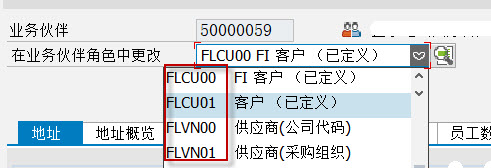Elasticsearch——》_bulk
推荐链接:
总结——》【Java】
总结——》【Mysql】
总结——》【Redis】
总结——》【Kafka】
总结——》【Spring】
总结——》【SpringBoot】
总结——》【MyBatis、MyBatis-Plus】
总结——》【Linux】
总结——》【MongoDB】
总结——》【Elasticsearch】
Elasticsearch——》_bulk
- 一、概念
- 二、操作类型
- 三、步骤
- 四、示例
- 1、index
- 2、create
- 3、update
- 4、delete
- 五、注意
一、概念
Elasticsearch的_bulk API可以让用户一次性批量索引、更新或删除多个文档,以提高索引效率和性能。
二、操作类型
Elasticsearch的_bulk API支持四种不同的操作类型: index、create、update、delete。
| 操作类型 | 描述 | 备注 |
|---|---|---|
| index | 插入文档 | 如果该文档已经存在,则覆盖已有的文档 |
| create | 插入文档 | 如果该文档已经存在,则抛出异常 |
| update | 更新文档 | 如果该文档不存在,则抛出异常(如果指定doc_as_upsert,则插入文档) |
| delete | 删除文档 | 如果该文档不存在,则抛出异常 |
三、步骤
- 创建一个包含“操作类型”和“文档数据”的批处理请求体
- 将请求体POST到/_bulk端点
四、示例
Bulk API的请求体必须遵循一定的格式规则:
- 每个操作必须是一行记录并以”\n”分割
- 每个操作前面必须包含一个操作类型(index、create、update、delete)
- 每个操作后面必须包含一个JSON格式的文档或文档更新语句(对于update、delete操作)
- 所有操作必须包含在一个JSON格式的对象中
1、index
# 在"myindex"的索引中插入ID为1的文档,文档中包含一个字段"field1"POST _bulk{"index":{"_index":"myindex","_id":"1"}}{"field1":"value1"}
2、create
# 在"myindex"的索引中插入ID为2的文档,文档中包含一个字段"field1"POST _bulk{"create":{"_index":"myindex","_id":"2"}}{"field1":"value1"}# 如果id为2的文档不存在,执行以上命令,则正常插入# 如果id为2的文档已存在,执行以上命令,则会抛出以下异常{"took": 0,"errors": true,"items": [{"create": {"_index": "myindex","_id": "1","status": 409,"error": {"type": "version_conflict_engine_exception","reason": "[1]: version conflict, document already exists (current version [1])","index_uuid": "Zc-GjYeEQeW6KpgnaqSBFA","shard": "0","index": "myindex"}}}]}
3、update
# 在"myindex"的索引中更新ID为3的文档,将"field2"字段更新为"value2"。POST _bulk{"update":{"_index":"myindex","_id":"3"}}{"doc":{"field2":"value2"}}# 如果id为3的文档已存在,执行以上命令,则正常更新# 如果id为3的文档不存在,执行以上命令,则抛出以下异常{"took": 2,"errors": true,"items": [{"update": {"_index": "myindex","_id": "3","status": 404,"error": {"type": "document_missing_exception","reason": "[3]: document missing","index_uuid": "-IEQ1U3kT1OQyewX551vIg","shard": "0","index": "myindex"}}}]}# 在"myindex"的索引中更新ID为3的文档,将"field2"字段更新为"value2"。POST _bulk{"update":{"_index":"myindex","_id":"3"}}{"doc":{"field2":"value2"},"doc_as_upsert":true}# 如果id为3的文档已存在,执行以上命令,则正常更新# 如果id为3的文档不存在,执行以上命令,则正常插入
4、delete
# 在"myindex"的索引中删除ID为1的文档POST _bulk{"delete":{"_index":"myindex","_id":"1"}}# 如果id为1的文档已存在,执行以上命令,则正常删除# 如果id为1的文档不存在,执行以上命令,不会抛出异常,但提示"not_found"{"took": 7,"errors": false,"items": [{"delete": {"_index": "myindex","_id": "5","_version": 1,"result": "not_found","_shards": {"total": 2,"successful": 1,"failed": 0},"_seq_no": 5,"_primary_term": 1,"status": 404}}]}
五、注意
_bulk API可以一次性处理多个操作,提高索引效率和性能。它在处理大批量数据的时候特别有用。需要注意的是使用Bulk API可能会对系统造成额外的负载和性能消耗,因此建议在非生产环境中先进行测试并仔细考虑实施策略。



































还没有评论,来说两句吧...